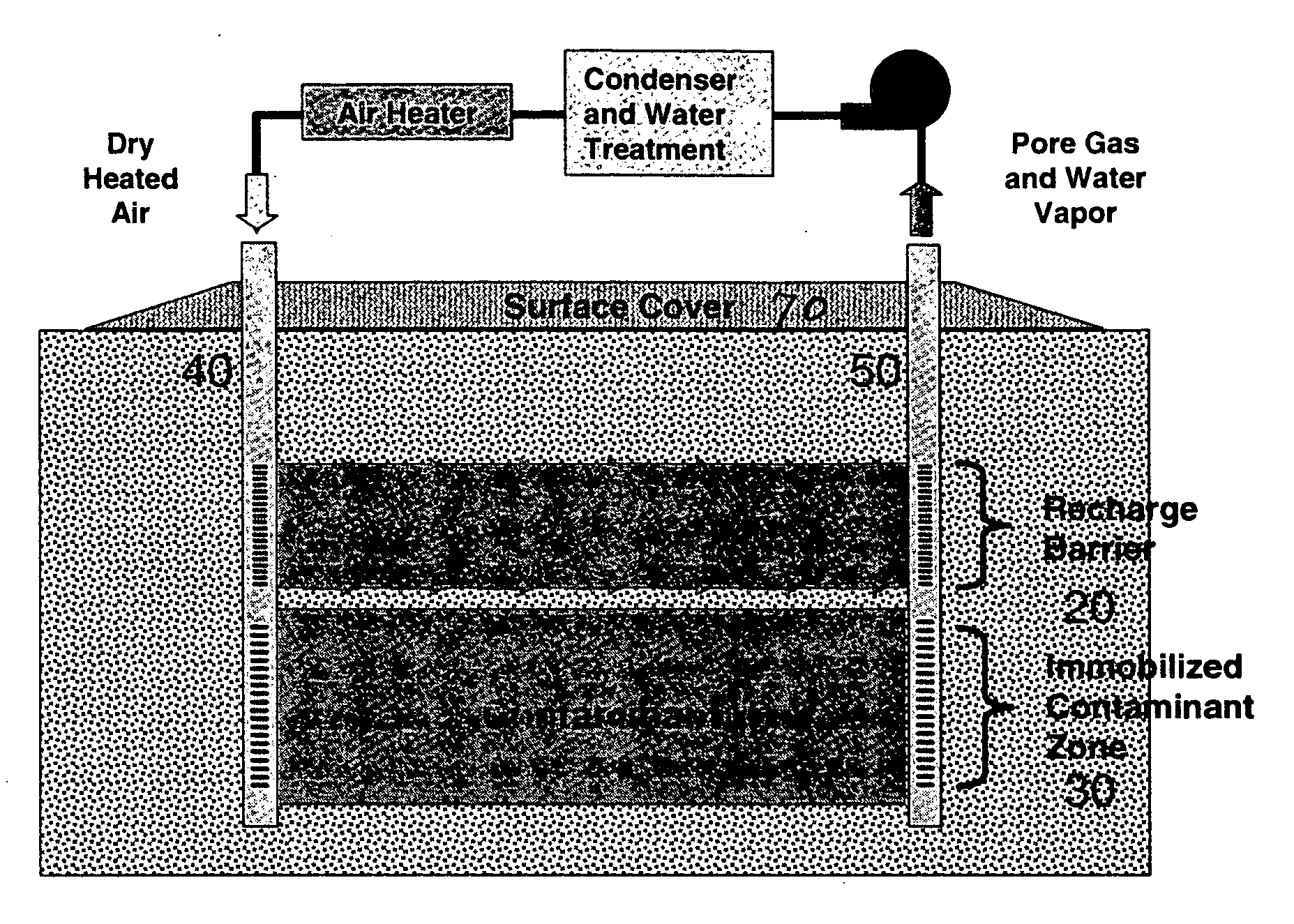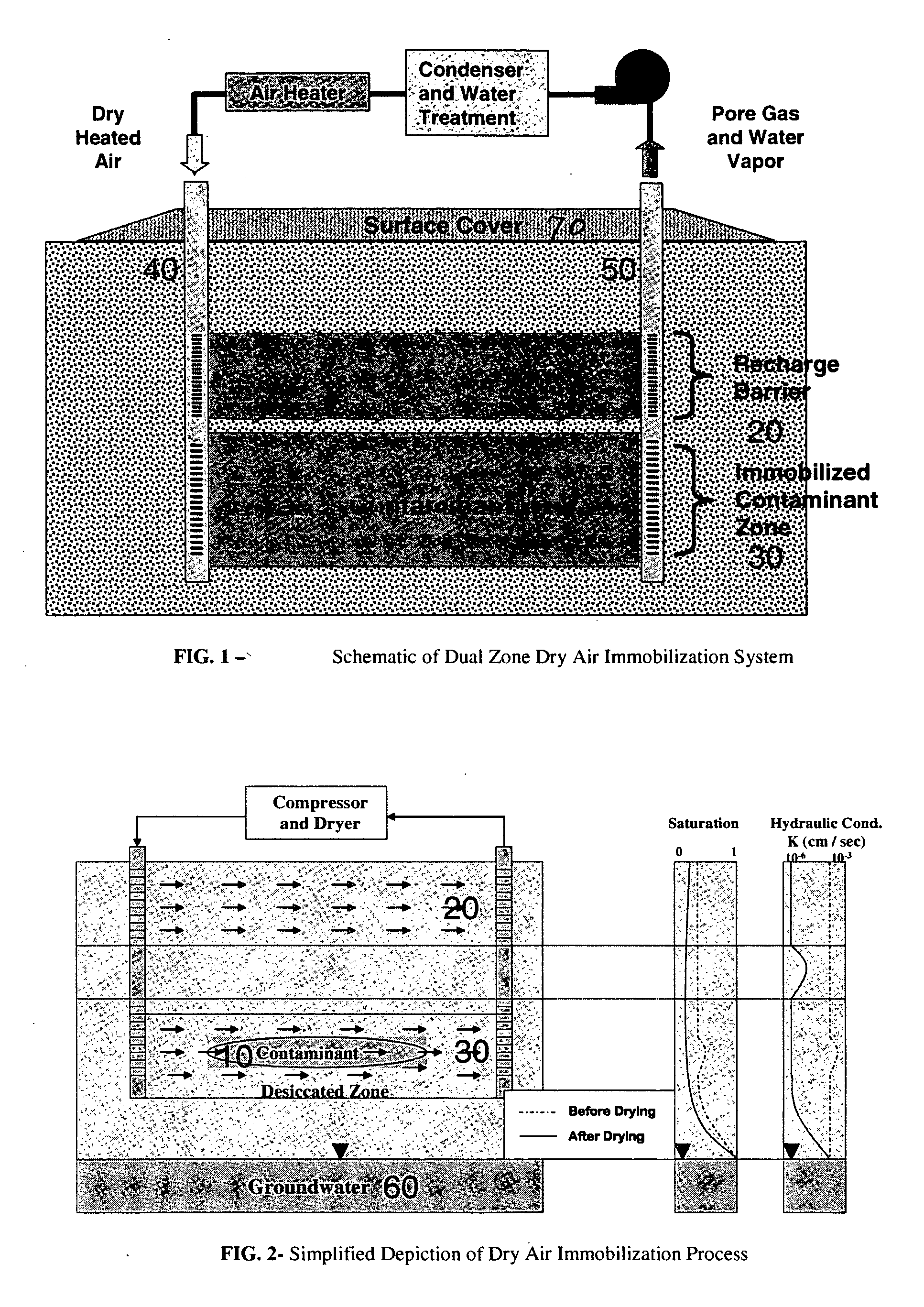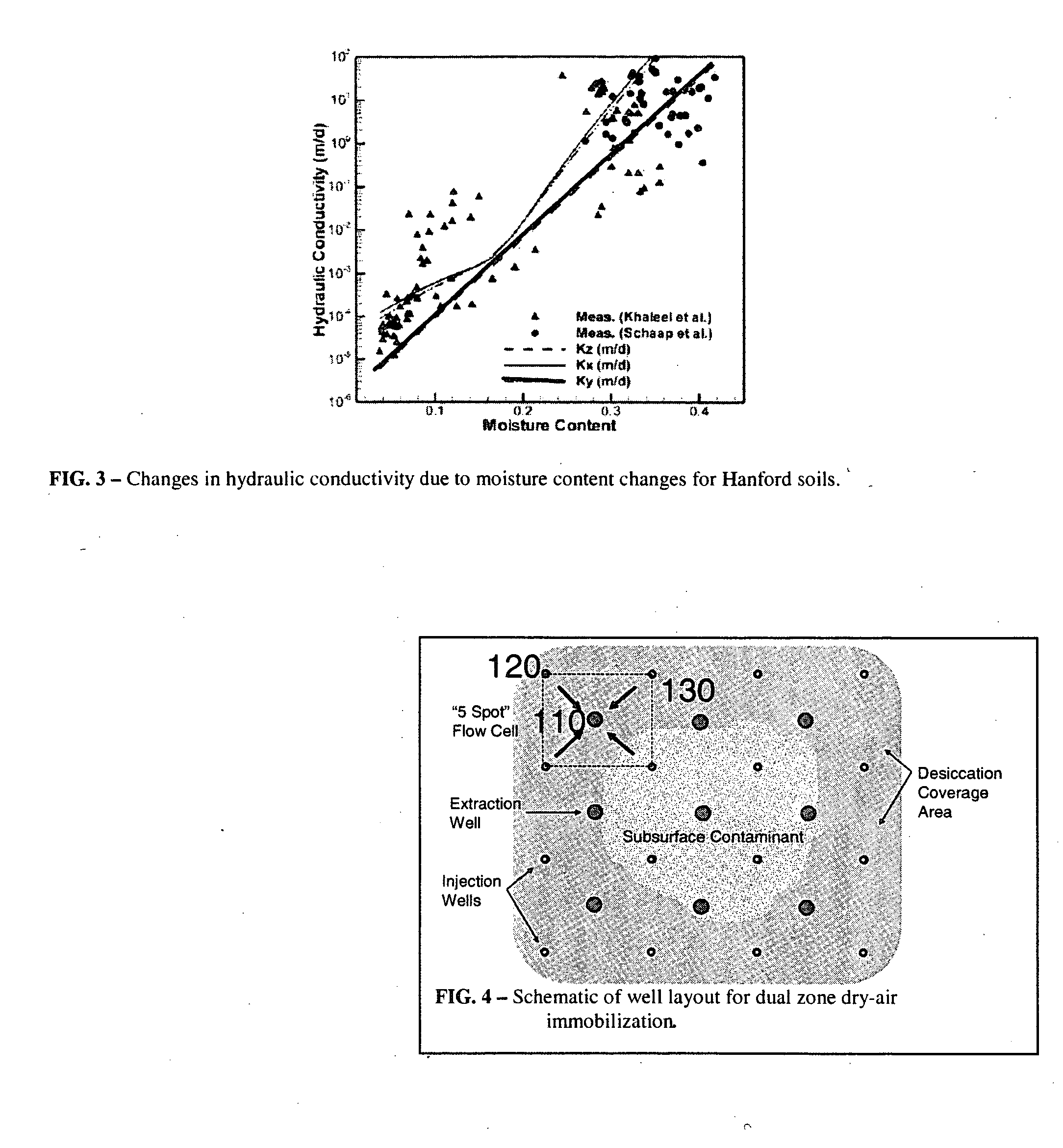[0015] The present invention mitigates the future
threat to groundwater. The dual-zone dry-air immobilization
system (DAIS) is preferably comprised of at least two dry subsurface zones, both of which work much like a
sponge. The two desiccated zones are created using the same set of wells. The primary zone is located within the plume and will dry the contaminated region and immobilize the contaminants, thus preventing further vertical migration of the contaminants. This primary zone provides an environment allowing geochemical stabilization through
precipitation of waste species. The secondary zone desiccates the soils above the contaminants to prevent natural recharge, and ensures no additional infiltration of fluids penetrate the contaminated zone, which could mobilize and carry contaminants to greater depths. The DAIS
system can be used in conjunction with a surface infiltration barrier (i.e. a cover) to further ensure minimization of infiltration. If a
surface barrier is not possible or plausible, the DAIS will be operated periodically to maintain desiccation conditions. The DAIS method can be implemented using or modifying existing vertical wells or by drilling new vertical wells.
[0016] The single-layer desiccation approach described by Raimondi has never been implemented, and requires the desiccation layer to be fairly deep. The present dual-zone approach is more proactive and less costly to implement because the desiccation layers are shallow. The method and apparatus of the present invention capture the water that will drive the contamination downward before it reaches the contamination, and also directly dries and minimizes any downward migration of the contamination within the plume itself.
[0017] The DAIS provides the following benefits: (1) an
effective method for contaminant immobilization that can be used in conjunction with surface covers to significantly reduce the risk of contaminants, especially radionuclides, reaching receptors at levels above regulatory limits; (2) two levels of protection through
elimination of infiltration from above the contaminated zone and immobilization of contaminants within the zone; (3) it can be applied over large areas with contaminated vadose-zone media much less expensively than competing containment or stabilization technologies; (4) it is broadly applicable to remediate many types of contamination problems, including tank or
pipe leaks, or disposal means such as cribs and lagoons; (5) it is non-chemically specific and can be used for a wide variety of contaminants and treats all contaminants simultaneously; (6) it is applicable primarily to sites with thick vadose zones containing contaminants; (7) it is based upon control of lateral flow, building upon the natural anisotropic characteristics of the vadose-zone media; (8) contaminant mobility is significantly reduced by aggressive alteration of
hydraulic conductivity; and (8) no liquids are introduced to the subsurface in this process, so there is little or no potential to mobilize contaminants.
[0018] The method and apparatus of the present invention prevent the vertical migration of a plume of subsurface contamination in the vadose zone to the groundwater by forming and maintaining one or more desiccation layers in the vadose zone that is located in or above the layer of contamination. These horizontal layers effectively act as an impermeable barrier to the vertical migration of dissolved contaminants. The preferred embodiment of the present invention (DAIS) is to produce two horizontal layers, one above the contamination plume and one in the contamination plume. These layers work much like a
sponge and are produced by injecting dry air at a specific elevation in one borehole and removing the air at another borehole. The upper dry layer will capture any natural recharge and eliminate further downward migration of
moisture, which could mobilize and carry contaminants to greater depths. The
lower zone will dry the contaminated region, which will immobilize the contaminants in place and prevent further downward migration. An alternative embodiment of the present invention is to produce a single desiccation barrier, either above or in the contamination plume. The method will work even if the plume is being actively fed from the vertical migration of waste contamination or water from above, which may originate at or near the surface, or in a surface or subsurface container (e.g. a tank,
pipe, crib, or lagoon). This method is particularly effective when contamination covers large areas and / or when the contamination is particularly dangerous or hazardous materials (e.g. radio-nuclides). If a
surface barrier (i.e. a cover) is not possible or plausible to prevent infiltration, the DAIS will be operated periodically to maintain desiccation conditions. The DAIS method can be implemented using or modifying existing vertical wells or by drilling new vertical wells.
 Login to View More
Login to View More  Login to View More
Login to View More 


